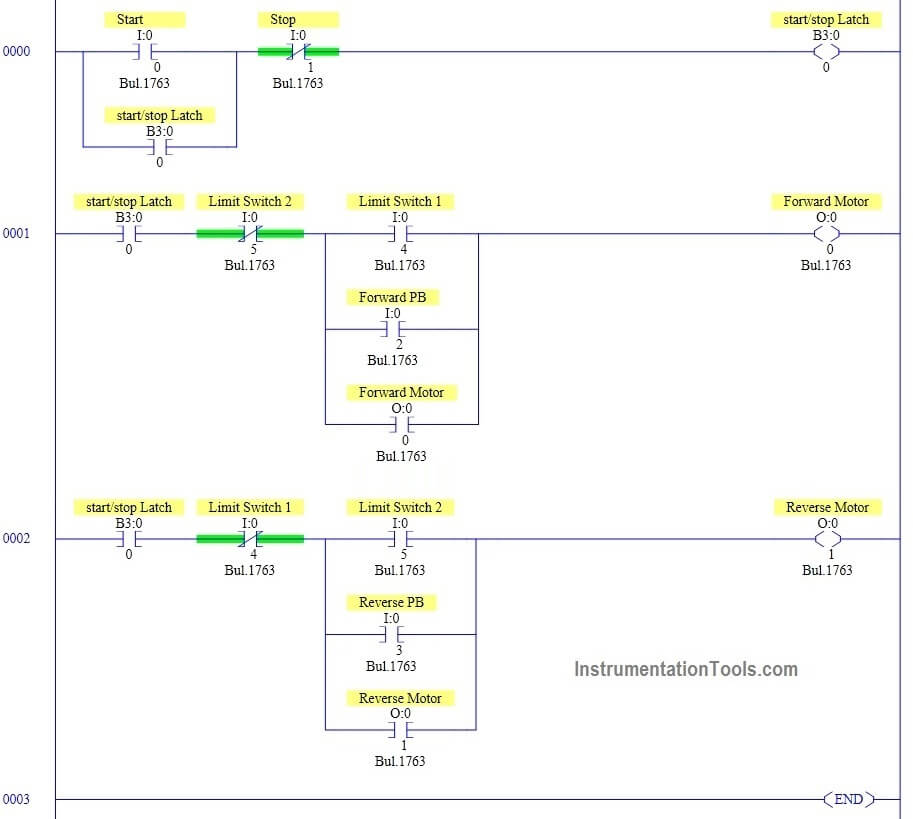

A failure in electrical interlocking can cause both coils to be energized at the same time. The best way to provide this is through electrical interlocks, which prevent the one coil from being energized if the other is engaged. Mechanical Interlocksįorward / reverse starters must never close their power contacts simultaneously.

They will also come with two sets of normally closed auxiliary contacts to act as electrical interlocks. If both starter coils became energized simultaneously, a short circuit will occur with potentially hazardous results.įorward / reverse starters will come with two sets of normally open auxiliary contacts to act as holding contacts in each direction. Note that the two contactors must be electrically and mechanically interlocked so that they cannot be energized simultaneously.

Plc relay forward and reverse motor series#
The return paths for both starter coils connect in series with the normally closed contacts of the overload relay so that if an overload occurs in either direction, the starter coils will be de-energized and the motor will come to a stop. Since the two motor starters control only one motor, only one set of overload relay heaters need be used. When the reverse contactor is energized, the power contacts connect line L1 to T3, line L2 to T2 and line 元 to T1 at the motor. When the forward contactor is energized, power contacts connect line L1 to T1, line L2 to T2 and line 元 to T3 at the motor. Each of the two different motor starters powers the motor with a different phase rotation. If a motor is to be driven in two directions, then it will require a Forward / Reverse motor starter, which has two three-pole horsepower-rated contactors rather than just one as in the conventional starter. This is known as reversing the phase rotation. Once two of the lines have been switched, the direction of the magnetic fields created in the motor will now cause the shaft to spin in the opposite direction. This can be done at the motor starter or at the motor itself. If a three-phase motor is to be driven in only one direction, and upon its initial energization it is found to be rotating opposite to what is desired, all that is needed is to interchange any two of the three line leads feeding the motor. Circuits 36 Forward/Reverse Control Circuits


 0 kommentar(er)
0 kommentar(er)
